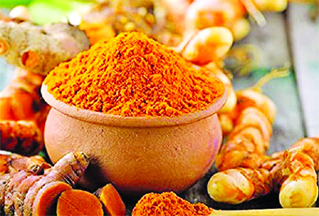
Ambahaldi (Curcuma Amada) is also known as raw turmeric, mango ginger, and white turmeric.The root of the Curcuma zedoaria plant, often known as white turmeric or Zedoaria, is what produces the spice. The root of the Curcuma Longa plant, sometimes known as haldi or yellow turmeric, is abundantly available throughout the Indian subcontinent. It has a bright orange interior and an earthy yellow outside due to the high curcumin concentration. It is a crucial spice in Indian cooking.
Amba Haldi is more vibrant and has a bitterer flavour than yellow turmeric. One of the key distinctions between the two is that amba haldi does not stain as much as yellow haldi. Although it is no longer a common spice and is frequently replaced with ginger, white turmeric is still used in Asian cooking. Among its culinary applications are sauce, pickles, candies, preserves, and candy.
Turmeric is a key spice used in regular cooking in Indian households. Amba Haldi is mentioned in Ayurveda and is thought to provide a variety of medicinal benefits. It is known as an Ayurvedic miracle remedy due to its unexpected advantages. It originates at a plant’s root.
The raw form of this root, referred to as kacchi haldi, is the finest way to use it. The root spice kacchi haldi, sometimes referred to as raw turmeric, is processed and turned into turmeric powder, just like ginger. It is possible to employ Amba Haldi both internally and externally.
To help us better understand Amba handi, nutritionist Lovneet Batra shares the many benefits of aamba haldi. She writes, “Turmeric or Haldi is a vital spice in Indian cuisines that adds a lovely yellow tinge to dishes and offers many wellness benefits.” Source: NDTV





Be the first to comment